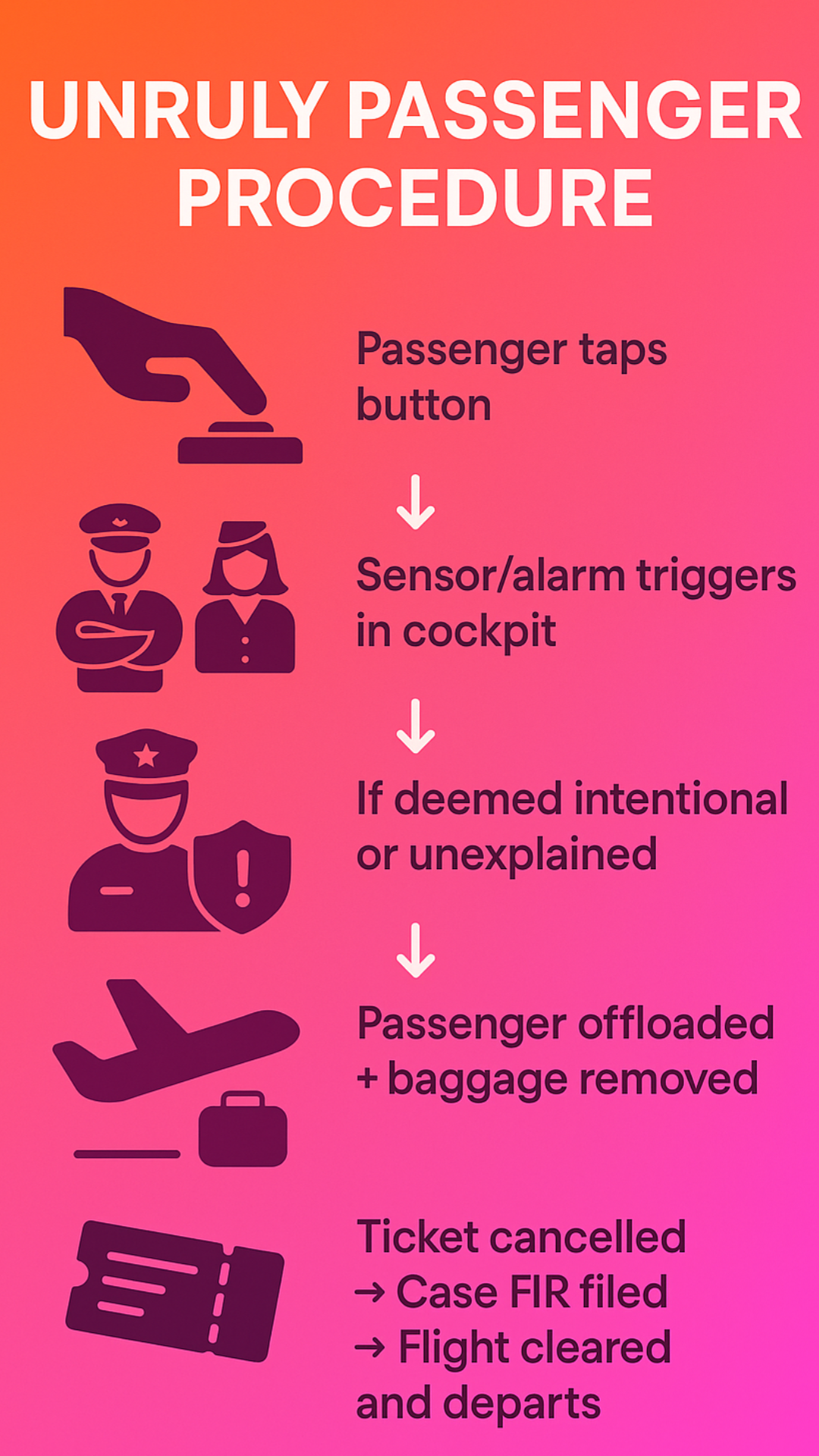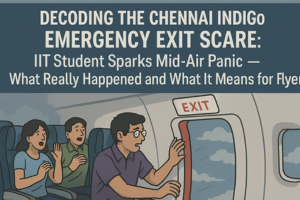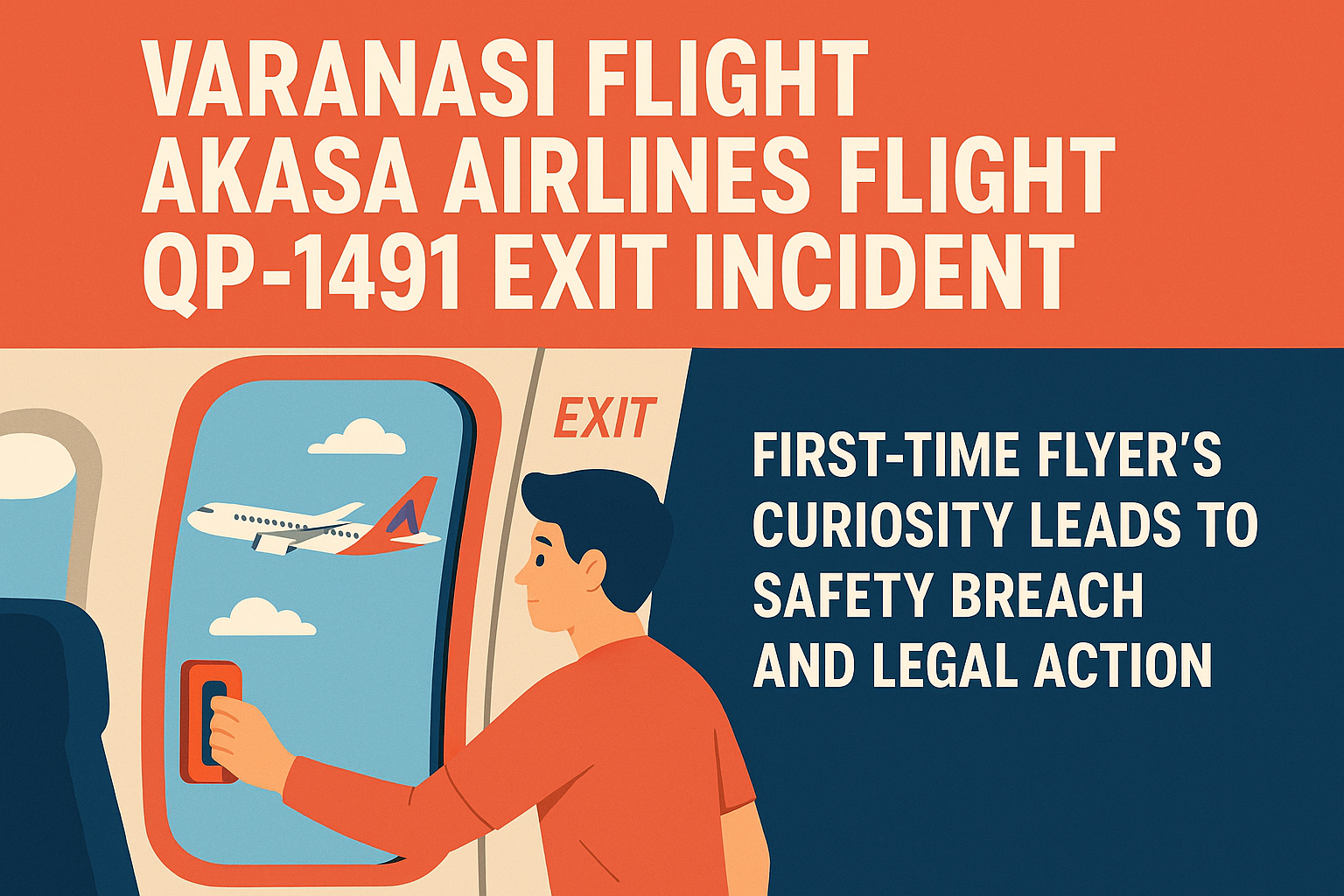1. What Happened? (Context)
Timeline & Facts
- On July 27, 2025, an IndiGo flight bound for Durgapur at Chennai Domestic Airport prepared to taxi with 164 people on board—158 passengers and 6 crew.
- Just as the aircraft was ready to move, a cockpit warning bell indicated that the emergency exit door had been tampered with.
- Flight attendants located a passenger seated near the exit—identified as 27‑year‑old Sarkar, from Hyderabad and a research student at IIT Madras.
- Sarkar claimed his hand had inadvertently pressed the emergency button, not intentionally attempting to open the door, and removed his hand before the door deployed.
- Security and airline staff did not accept his explanation. His ticket was cancelled, he was offloaded with his baggage, and handed over to Chennai Airport Police. A case has been registered, and investigation is ongoing.
- The flight departed about one hour late, with 157 passengers onboard.
Data at a Glance
| Detail | Information |
|---|---|
| Date | July 27, 2025 |
| Departure Airport | Chennai Domestic (MAA) |
| Destination | Durgapur, West Bengal |
| Total on board | 164 (158 passengers, 6 crew) |
| Delay | Approximately 1 hour |
| Passenger in question | 27‑year‑old “Sarkar” from Hyderabad |
| Claim | Accidental button press |
| Outcome | Offloaded, baggage removed, FIR filed |
2. Why It Matters (Analysis)
Systemic Safety Triggers
- Emergency-exit seats are designed with sensors and alarms. Even a momentary interaction triggers the cockpit warning.
- SOPs demand that any suspected tampering halts departure until the area is cleared and risk assessed.
Past Parallels
- January 2025: Emergency flap incident on a Jodhpur–Bengaluru IndiGo flight led to passenger arrest.
- September 2023: Delhi–Chennai IndiGo flight saw another door mishandling attempt; passenger removed pre-takeoff.
- Late 2022 incidents in Chennai and Nagpur raised broader safety concerns.
Intent vs. Responsibility
- Even an accidental press is treated seriously due to potential catastrophic risks.
- Airlines follow a zero-tolerance policy to deter safety breaches.

3. Now What? (Action & Takeaways)
For Airlines & Airports
- Clearer signage and announcements for passengers in emergency exit rows.
- Enhanced crew training for handling exit-trigger events.
- DGCA collaboration to review penalties for “accidental” triggers.
For Passengers
- Do not lean on or store items near emergency exit handles.
- Be proactive and cooperative if accidental contact occurs.
- Always document your version clearly.
For Readers & Advocates
- Raise awareness through petitions for better emergency-row education.
- Encourage DGCA to mandate safety demo videos specific to emergency exits.
Closing Thought
This seemingly minor mishap caused major flight disruption and legal consequences. The message is clear: treat every emergency door with the same caution as a live weapon—accidental or not.
India | Tamilnadu | Chennai



